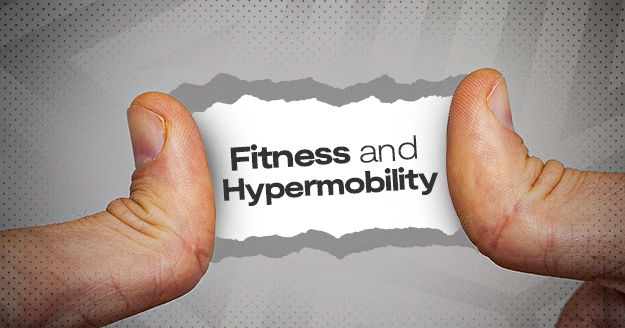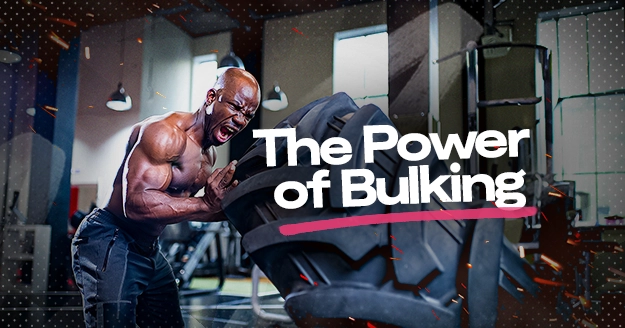Understanding Hypermobility
Hypermobility is often misunderstood or overlooked. It’s essential to recognize the condition’s characteristics, such as joint laxity and increased flexibility. While these traits might seem advantageous, they can lead to joint instability, increasing your risk of injury during physical activity.
Is joint hypermobility and Joint Hypermobility Syndrome (JHS) the same thing?
Joint hypermobility and Joint Hypermobility Syndrome (JHS) are related concepts, but they are not precisely the same.
Joint Hypermobility – This is the ability of a joint to move beyond its normal range of motion. It is a physical characteristic that some individuals possess, often due to genetic factors. Hypermobility can occur in several joints throughout a person’s body and may or may not be associated with any symptoms or medical conditions.
Joint Hypermobility Syndrome (JHS) – On the other hand, JHS is a medical condition characterized by joint hypermobility along with symptoms such as joint pain and instability.JHS is a subtype of a broader condition known as Ehlers-Danlos Syndrome (EDS), a group of connective tissue disorders affecting the joints, skin, and blood vessels.
In summary, while joint hypermobility refers to the physical ability of joints to move beyond their normal range, Joint Hypermobility Syndrome specifically refers to a medical condition characterized by joint hypermobility and associated symptoms.
But no worries, this blog addresses considerations for training with hypermobility, encompassing both joint hypermobility and Joint Hypermobility Syndrome (JHS).
Tips for Working Out with Hypermobility
- Warm-up with Dynamic Exercises
A proper dynamic warm-up is crucial, enhancing blood flow and preparing the nervous system for exercise. It should include activities that mimic daily movements, ensuring comprehensive preparation for any workout. A thorough warm-up should go beyond a brief jog and a few burpees, incorporating exercises that mimic everyday life activities.
Some examples of dynamic warm-ups are:
- Hip Circles.
- Arm Circles.
- Arm Swings.
- High-Stepping.
- Heel-to-Toe Walk.
- Lunges with a Twist.
- Step Up and Over.
- Gradually Increase Intensity
Avoid sudden spikes in workout intensity, as this can increase the risk of injury for individuals with hypermobility syndrome. Instead, focus on progressing gradually over time. Start with low-intensity exercises and slowly increase duration, frequency, and intensity as your fitness level improves. This gradual approach allows your body to adapt safely to increased demands.
- Focus on Low-Impact Activities
When beginning a new exercise program, opt for low-impact exercises that are gentle on your joints while still providing a great workout. Swimming, cycling, walking, and yoga are excellent workouts for hypermobility.
These activities help improve cardiovascular health, strength, and flexibility without putting excessive strain on your joints.
- Do Isometric Exercises
Isometric exercises are often recommended for individuals with hypermobility because they help improve joint stability without placing excessive strain on the joints. Here’s why isometric exercises are beneficial for hypermobility:
Strengthening without Movement: Isometric exercises involve contracting muscles without changing the muscle’s length or the joint’s angle. This static contraction helps strengthen muscles around the joints without putting them through a full range of motion, reducing the risk of overextension or injury.
Joint Stability: By focusing on holding a specific position or posture, isometric exercises help improve joint stability. This is particularly important for individuals with hypermobile joints, as it can help prevent joint subluxations or dislocations by strengthening the muscles that support the joint.
Controlled Muscle Activation: Isometric exercises allow for controlled muscle activation, which is important for individuals with hypermobility who may have difficulty controlling joint movement.
Low-Impact: Isometric exercises are generally low-impact and can be performed without putting stress on the joints. This makes them suitable for individuals with hypermobility who may need to avoid high-impact activities that could exacerbate joint laxity or instability.
- Incorporate Stability and Balance Exercises
Include stability and balance exercises in your workout routine to improve proprioception and joint stability. Balance boards, stability balls, and single-leg exercises are effective for enhancing balance and proprioceptive awareness.
- Don’t Neglect Flexibility Training
While individuals with hypermobility syndrome are naturally flexible, it’s essential to incorporate controlled flexibility training into your routine. Focus on gentle stretching exercises that target tight muscles. Avoid overstretching or forcing your joints into extreme positions, as this can exacerbate joint instability.
- Incorporate Strength Training
Do you have hypermobility and weight training is an exercise you want to add to your routine? If so, continue reading.
Strength training, including weight training for hypermobility, is essential for individuals with hypermobility syndrome as it helps improve joint stability and muscular support. However, focusing on proper form and technique is crucial to avoid overextending your joints.
You don’t have to worry about hypermobility and weight training as long as you keep this in mind:
- Start with resistance bands or light weights and gradually increase intensity as your strength improves. Immediately doing heavy weightlifting can increase your risk of injury.
- Focus on strengthening muscles around vulnerable joints, such as the shoulders, knees, and ankles.
- Limit Your Range of Motion
Mobility pertains to the extent of movement in joints and muscles. In individuals with hypermobility, this range of motion exceeds the norm. Therefore, it’s vital to learn to regulate and restrict one’s range of motion, especially when embarking on a fitness regimen.
For example, rather than performing a full push-up lowering all the way to the floor, restrict the range to half the motion. This action helps prevent excessive stretching of the anterior shoulder and ligaments.
Likewise, if you have excessively flexible hip joints, it’s beneficial to limit the range of motion, especially when instructing proper squat technique.
By restricting the range of motion, you decrease reliance on ligaments and joint capsules, which are often lax in hypermobile individuals.
- Mindful Movement
Practice mindful movement during workouts to prevent overextending your joints. Pay close attention to your body’s alignment and avoid hyperextending or locking out your joints. Engage your muscles to provide support and stability throughout each exercise. If you are unsure how to do the proper form, consider working with a certified personal trainer.
- Use Supportive Equipment
Consider using supportive equipment such as wraps or braces to provide additional stability to your joints during exercise. This can provide added support during high-impact activities.
- Listen to Your Body
Listen to your body and respect its limitations. Stop immediately and reassess your activity if you experience pain or discomfort during exercise. It’s essential to differentiate between muscle soreness and joint pain. Pushing through pain can exacerbate your symptoms and lead to further injury. Be patient with yourself and modify exercises as needed to accommodate your body’s needs.
- Stay Hydrated and Properly Fuelled
Proper nutrition and hydration are needed to support your body during workouts. Drink water pre-, during, and post-exercise to prevent dehydration and muscle cramps. Eat a balanced diet of colorful fruits, leafy green veggies, lean proteins, and healthy fats to support energy levels and muscle recovery.
- Seek Professional Guidance
Consult with a healthcare professional. A certified personal trainer or physical therapist, who has experience working with individuals with hypermobility, can provide personalized guidance and tailor a workout program to suit your needs and goals.
- Be Patient and Persistent
Above all, be patient and persistent in your fitness journey with hypermobility syndrome. Progress may be slower compared to individuals without this condition, but consistency is key. Celebrate small wins along the way. Don’t be discouraged by setbacks.
Conclusion
Training with hypermobility requires a thoughtful and individualized approach. By doing these tips, you can enjoy the benefits of regular exercise while lowering the risk of injury. Remember to be patient, stay persistent, and prioritize your overall health and well-being in your fitness journey with hypermobility syndrome.










